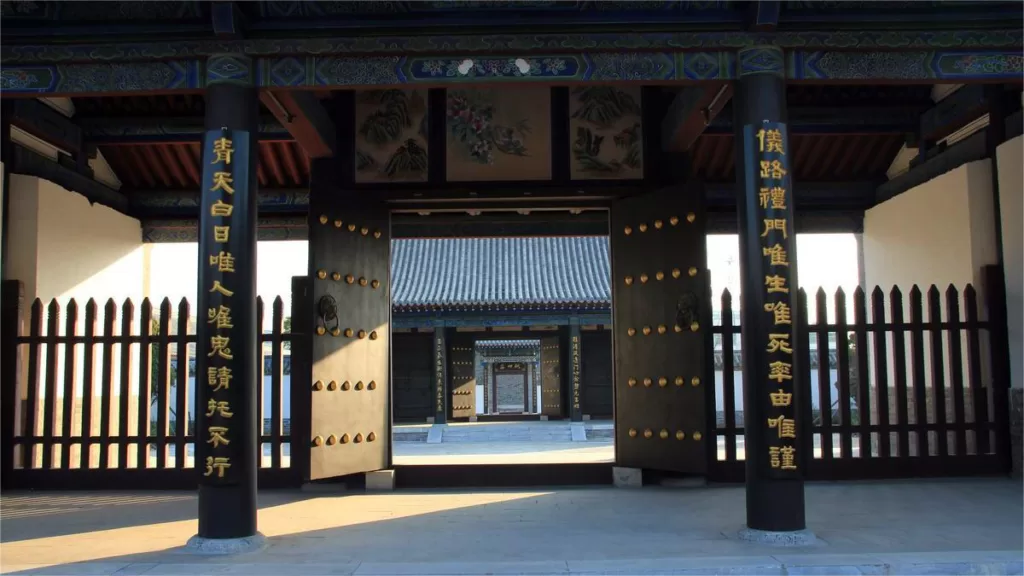Nandagang Wetland (南大港湿地), located in the northeastern part of Cangzhou City, Hebei Province, is a renowned coastal wetland formed by the siltation of rivers. It comprises a diverse range of ecological elements, including grasslands, swamps, water bodies, and a variety of wildlife. Cangzhou, situated in the coastal plain with numerous rivers, is where more than 20 rivers converge before entering the sea, creating multiple marshes and wetlands. Among them, Nandagang Wetland stands out as one of the most remarkable.
At Nandagang Wetland, the highest elevation is 5.4 meters, while the lowest point is 2.9 meters. The wetland is divided into marsh depressions, shallow basins, hillocks, and higher flatlands, with over 90% of the vegetation being dominated by reeds. A 30-kilometer-long forest belt surrounds the wetland, consisting of more than 60,000 trees. This natural reserve boasts abundant and diverse native flora and fauna.
Table of Contents
- Basic Information
- Location and Transportation
- Highlights of Nandagang Wetland
- Vlog about Nandagang Wetland
- Other Attractions in Cangzhou
Basic Information
| Estimated Length of Tour | 2 – 3 hours |
| Ticket Price | 50 RMB |
| Opening Hours | 8.30 – 17.30 |
| Telephone Number | 0086-0317-7559286 |
Location and Transportation
Nandagang Wetland is situated in the geographical coordinates of approximately North latitude 38°23′ to 38°33′ and East longitude 117°18′ to 117°38′. It is located in the northeastern part of Cangzhou City, Hebei Province, China, adjacent to the Bohai Sea.
Tourists can take Bus 821, 833, or Nandagang Sightseeing Line 2, get off at Nandagang Wetland South Gate Stop (南大港湿地南门站), and walk about 144 meters to get there.
Highlights of Nandagang Wetland
Rich Biodiversity
The entire conservation area contains 140 plant species from 47 families. Expert observations have identified 268 bird species from 14 orders and 38 families, with 16 of them falling under China’s first-level protected species category. These include the white stork, black stork, white-shouldered eagle, red-crowned crane, hooded crane, common crane, mandarin duck, and great bustard.
The White Stork
The white stork, a first-level protected species in China and listed in the CITES Appendix I, inhabits open plains, riverbanks, and wetlands in forested areas. Nandagang Wetland is particularly suitable for its survival. White storks are known for their slender bodies, measuring around 1200 millimeters in length, with wingspans exceeding 600 millimeters. They have long, straight bills of up to 210 millimeters. During non-breeding seasons, they gather in flocks, displaying a tranquil and vigilant nature. In case of threats, they can make intimidating sounds by clapping their bills together. They are agile fliers and are migratory birds, feeding on fish, frogs, small rodents, chicks, mollusks, crustaceans, and insects.
The Red-Crowned Crane
The red-crowned crane, also known as the Japanese crane, Manchurian crane, or Chinese crane, is a first-level protected species in China. The name “red-crowned crane” is derived from the red patch of bare skin on the top of its head. This bird is native to East Asia and holds deep cultural significance, symbolizing auspiciousness, loyalty, and longevity.
The Manderin Duck
The mandarin duck, scientifically known as Aix galericulata, belongs to the duck family. It is a species that survived from the Tertiary period, making it a “living fossil” among birds. With a highly restricted distribution and a global population of fewer than a thousand individuals, the mandarin duck is an extremely rare and endangered species. It is a first-level protected animal in China. The species was first collected by the British in China in 1864, and they named it the “Chinese mandarin duck.” The mandarin duck is listed in the IUCN Red List of Threatened Species and the ICBP Red Data Book of Endangered Birds.
Unspoiled Environment
As of 2017, Nandagang Wetland remained undeveloped, with the entire area being managed as a closed ecological reserve, attracting few tourists. As a result, it has maintained its pristine natural state and biodiversity. Each spring and autumn, various migratory birds pass through the region due to its unique ecological environment. Nandagang Wetland serves as a convergence point for migratory birds traveling along different routes from the north and south. Large flocks of swans are a common sight here during these seasons. The wetland offers a vast expanse of lush greenery and fresh air, providing visitors with a sense of tranquility and serenity.
Fascinating Surrounding
Surrounding Nandagang Wetland is Nandagang Farm, one of the nine major agricultural and pastoral farms in Hebei Province. The farm specializes in aquaculture, operates China’s largest fine wool sheep breeding base, features fragrant rose gardens, and produces delicious jujubes on its trees. This has led to the development of an agricultural industry with a focus on commercialization. To the northeast of the farm lies the Nandagang Reservoir, constructed in 1972 at the northern tip of the Bohai Bay. The wetland connects to the western shore of the Bohai Sea and is home to one of the world’s three surviving ancient shell ridges (the other two being in St. Louis, Louisiana, USA, and Sri Lanka), offering rare insights into the scale, time span, and geological history of the Quaternary period.





